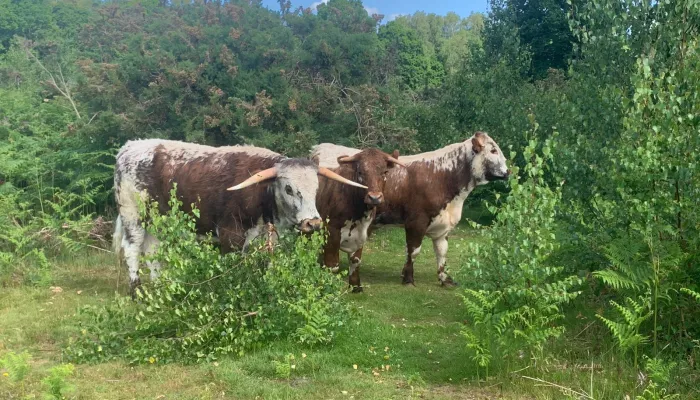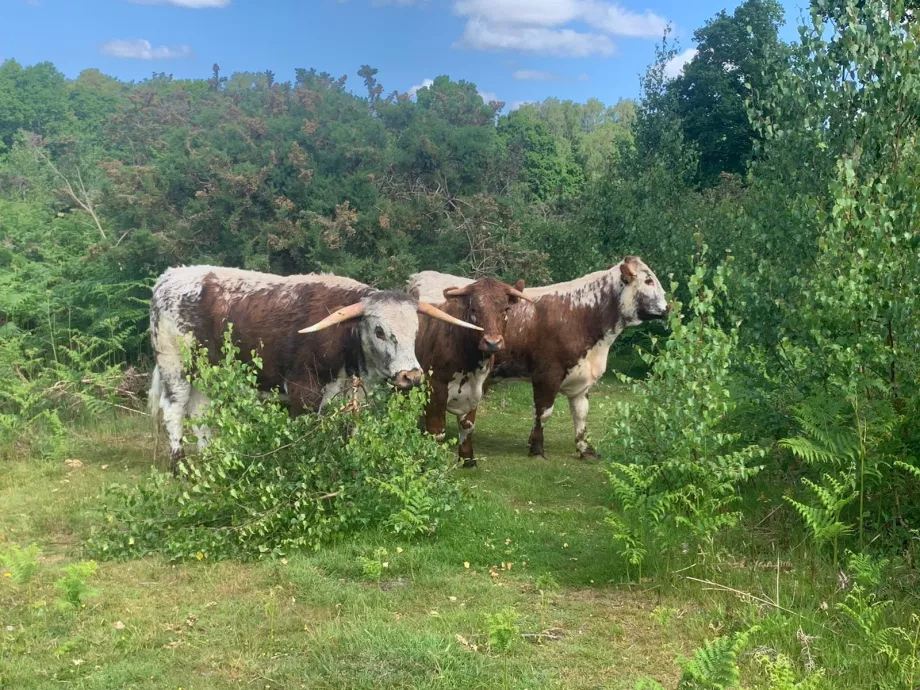As this conservation work progresses, there are many ways to help nature beyond Kent Wildlife Trust reserves. Encouraging insects in to the garden by leaving wild corners, being less tidy generally, and ditching pesticides and harmful chemicals for organic alternatives, are small steps with big results.
Back at Hothfield Heathlands, the nectar-rich papery flowers of the ling, Calluna vulgaris, started flowering in July and we hope for a longer display than in last year’s drought. Meanwhile, rising elegantly above the bracken is another of my many favourite flowers, although not an indicator species for Hothfield habitats. Rosebay willow herb, Chamanaerion angustifolium, is a pioneer plant able to colonise burnt bare ground.
Its subtly coloured flowering spike deserves close inspection: the four magenta petals are not quite identical, the sepals a deeper hue, the pollen is grey, the long flower stems colour red where they face the sun. Up to 80,000 seeds per plant (who counted?) float far and wide on tiny plumed parachutes. British Canadian indigenous groups use the flowers and young leaves for food, add the seed fluff to other materials for weaving and padding, and use stem fibre for twine.
The white variety is an attractive less vigorous garden plant. Rich in nectar, the flowers provide sustenance for many insects, including the equally beautiful gold and pink elephant hawk-moth, Deilephila elpenor, which lays its eggs on the plant where the caterpillars' larvae feed before the chrysalis drops to overwinter in the ground litter.
Everyone is welcome to visit Hothfield Heathlands but please remember that it is, first and foremost, a haven for wildlife. Please keep dogs close to you at all times – particularly around children and livestock - and on the main path, away from areas of heather and gorse. Breeding and feeding birds are seriously impacted by disturbance, causing them to abandon nests or preventing them from collecting the food they need.
Please make sure to take anything you bring home with you and to remove litter, dog mess and place all dog bags in the bins. Be tick aware for dogs and humans throughout the summer; guidance is available here. Fire is also a risk at this time of year, so please help ensure no fires are ever lit on site.
Hothfield Heathlands is one of the best spots for wildlife in the county, with your help we can keep it that way so that we can all continue to enjoy this spectacular reserve.
Enjoy and take care.





